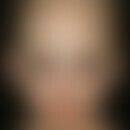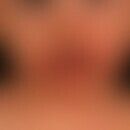Synonym(s)
DefinitionThis section has been translated automatically.
A permanent reshaping of the hair is achieved by breaking up the disulfide bridges of the hair keratin and linking them again after reshaping. Thus straight hair can be waved, frizzy hair can be straightened. The most important chemicals for hair curling are derivatives of thioglycolic acid.
General informationThis section has been translated automatically.
Thioglycolic acid is a colourless, liquid compound (molecular formula C2 H4 O2 S), which chemically belongs to the group of thiols, which contain a sulphur atom instead of an oxygen atom. The acid is miscible with water, ethanol, chloroform, toluene and diethylether. The salts/esters of thioglycolic acid are called thioglycolates.
As a permanent wave liquid, generally 1%-10% ammonium thioglycolate is used, an ammonium salt of thioglycolic acid (called developer in hairdressing). This causes a molecular shift within the keratin (the disulfide bridges between 2 cysteine units of the keratin are dissolved).
Ammonium thioglycolate: From an allergological point of view ammonium thioglycolate has a rather weak sensitizing potency (Uter W 2017). In contrast to this, glyceryl thioglycolate (INCI), also known as glyceryl monothioglycolate (GMTG), which caused a high rate of contact allergies when used. Today it is largely replaced by ammonium thioglycolate.
Further thioglycolates in cosmetic applications:
Potassium thioglycolate: The potassium salt of thioglycolic acid is used as depilatory agent under the INCI designation "Potassium thioglycolate".
Calcium thioglycolate: The calcium salt of thioglycolic acid is used as depilatory under the INCI designation "Calcium thioglycolate".
LiteratureThis section has been translated automatically.
- Borelli S (1957) Toxic and allergic reactions to organic sulfur compounds in permanent wave preparations. III. Investigations of the comparative tolerance of ammonium and sodium thioglycolate solutions. Dermatologist 8:247-251.
- Engasser P (2000) Type I and type IV immune responses to glyceryl thioglycolate. Contact dermatitis 42:298.
- Helaskoski E et al (201) Prick testing with chemicals in the diagnosis of occupational contact urticaria and respiratory diseases. Contact dermatitis 72:20-32.
- Silva EA et al (2012) Study of the frequency of allergens in cosmetics components in patients with suspected allergic contact dermatitis. On Bras Dermatol 87:263-268.
- Uter W (2017) Hairdressing allergens. Allergo J 26: 20-23
- Valks R et al (2005) Contact dermatitis in hairdressers, 10 years later: patch-test results in 300 hairdressers (1994 to 2003) and comparison with previous study. Dermatitis16: 28-31.



